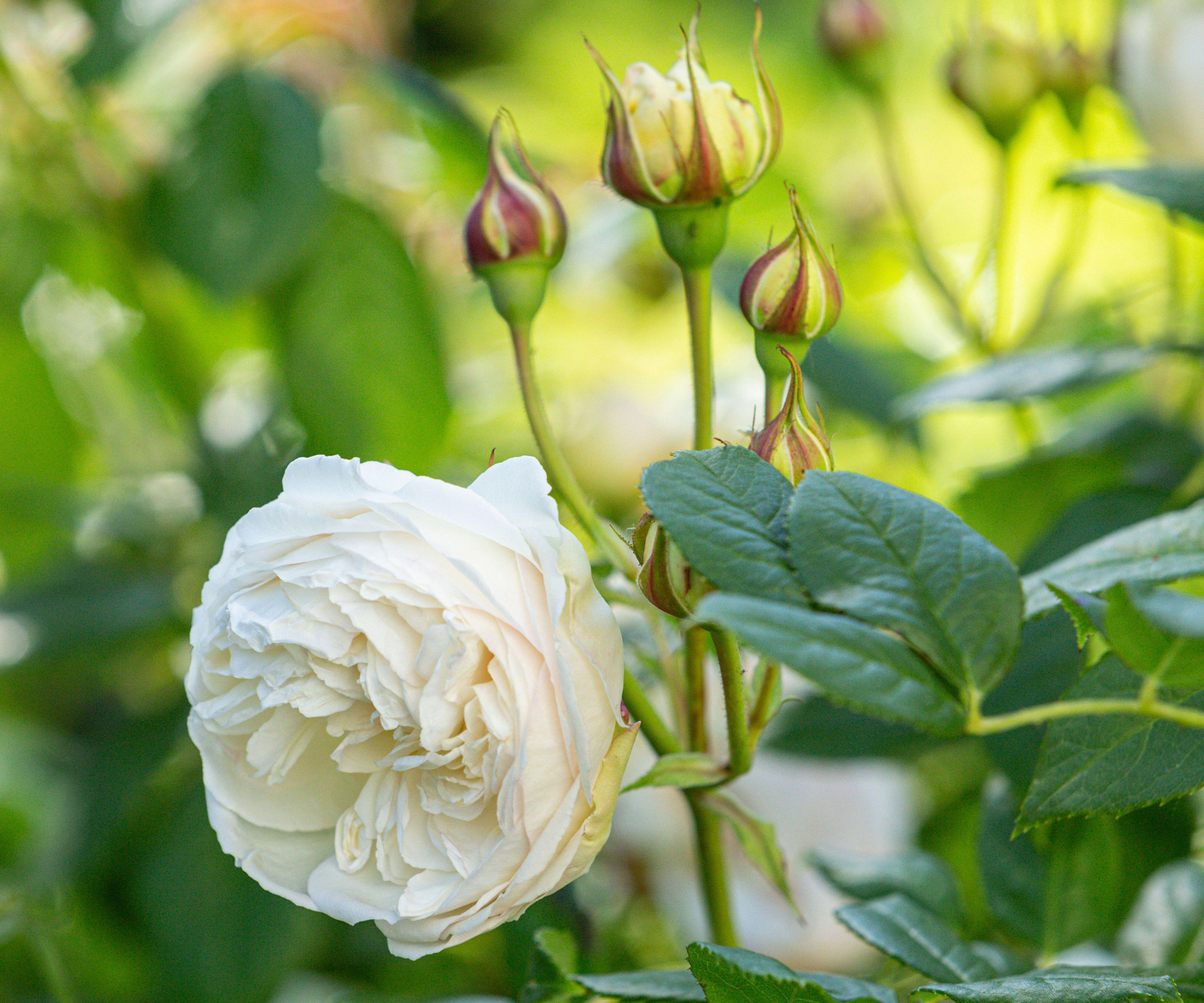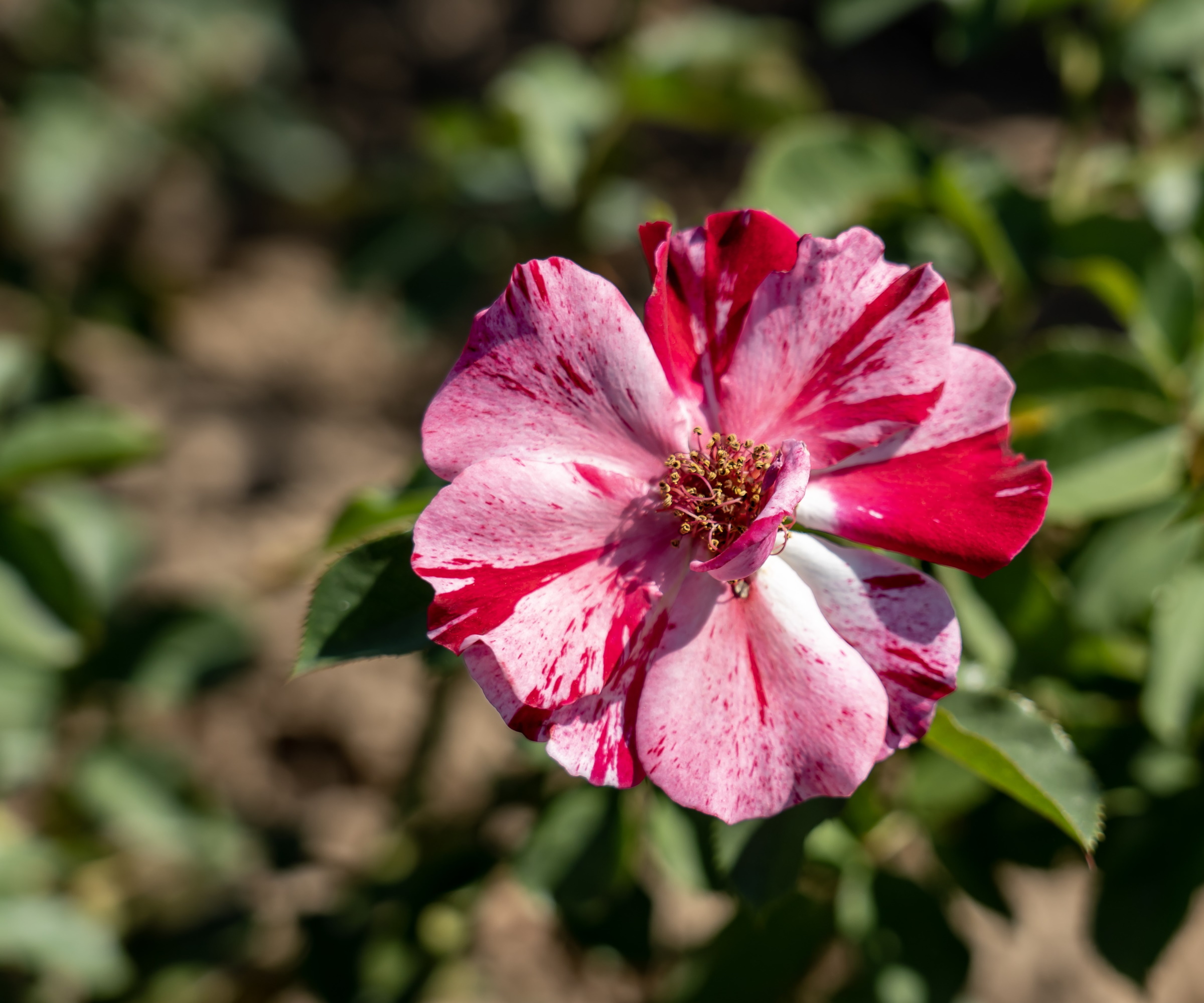Best climbing roses – 12 romantic varieties to add scent and color to any outside space
Maximize color in your yard by growing vertically, covering exterior walls and garden structures with some of the best climbing rose varieties


Thomas Rutter
The best climbing roses can quickly cover walls, fences and garden structures with bright and brilliant blooms. While there are many different climbing roses to choose from, I would caution you to select your cultivar carefully.
Before you plant climbing roses, analyze the space you want them to fill. While I love the 'Clare Austin' and 'Honeymoon' varieties, both of these climbing roses have cream-colored blooms, and so would be lost against a whitewashed wall but look impressive set against a dark-painted fence. Selecting the right plant for the right place is important, however, not only for aesthetic reasons but for practical growing too. While most roses will thrive in temperate regions, it is best to choose a cultivar suited to your specific US hardiness zone where it can tolerate your winter and summer weather.
So, whether you want to add some color to a drab garden fence, or you want to incorporate floral perfume into your yard, make sure the rose you choose is suitable for your space. Here, I share some of my favorite climbing roses that are renowned for their color, scent and impact.

‘The Pilgrim’ can reach 7 to 8 feet tall and is ideal for training over a garden arch or pergola
12 best climbing roses
Climbing rose varieties present gardeners with an opportunity to create a vertical garden, maximizing growing space by filling garden walls and surfaces with romantic blooms. So, if you are looking for rose garden ideas for small or large yards, climbing roses are plants to consider.
One general rule to follow is that roses are sun worshippers. The more sun your rose plant enjoys, the more blooms it will produce. While some roses will tolerate part-sun-part-shade, I would always recommend positioning roses where they will enjoy at least 6-8 hours of direct light each day.
Best pink and red climbing rose varieties
1. America

Rosa 'America' produces unusual coral-pink blooms with golden yellow center
- Height: 10ft
- Spread: 6ft
- Hardiness: US hardiness zone 6 - zone 9
- Color: Pink flowers
- Growing requirements: Full-sun, this rose will struggle in part-shade. Plant in a border with free-draining soil
If you are planning to design a rose garden with peach and coral shades, then 'America' is the climbing rose for you. Who wouldn't love these striking blooms? Tight buds burst open to reveal impressive double flowers that will certainly add drama to your yard.
This medium-sized climber has flexible stems and is ideal for training over an obelisk or pergola. What's more, it is long-flowering, producing blooms from summer to fall. One trick is to maintain a rigorous deadheading schedule and encourage more blooms late into the season.
Design expertise in your inbox – from inspiring decorating ideas and beautiful celebrity homes to practical gardening advice and shopping round-ups.
Rosa 'America' is available to order online from Walmart.
2. Compassion

Rosa ‘Compassion’ has striking pale pink blooms with an intoxicating fragrance
- Height: 10ft
- Spread: 6ft
- Hardiness: US hardiness zone 6 - zone 7
- Color: Pink flowers
- Growing requirements: Full-sun position with rich soil
Perhaps you prefer a traditional Hybrid Tea Rose? Rosa 'Compassion' is a vigorous option, notably producing flowers from summer through to fall. It is a good option for your vertical garden ideas and is one of the best climbing roses around.
Introduced in 1973, the pink-apricot blooms have a decidedly old-fashioned look. Its upright reddish stems are clad with lush glossy green foliage, making this an excellent choice to grow over an arch or around a door.
Rosa 'Compassion' is available to order online from Amazon.
3. Gertrude Jekyll

Rosa 'Gertrude Jekyll' is a classic cottage garden rose
- Height: 8ft
- Spread: 5ft
- Hardiness: US hardiness zone 6 - zone 7
- Color: Pink double flowers
- Growing requirements: Full-sun position in the yard with free-draining soil
Rosa 'Gertrude Jekyll' is perhaps one of the best fragrant flowers in this selection. The large fully double rose-pink blooms of this popular climbing rose has a deliciously strong classic rose scent.
This variety flowers reliably through summer and fall. Short stature and easily trainable stems make this rose ideal for pillars, walls and obelisks. Be sure to position your rose in an open spot, away from overhanging trees and competitive roots to give it the best chance to produce as many blooms as possible.
4. Lady in Red

The romantic Rosa 'Lady in Red' produces deep red blooms and will cover a garden wall
- Height: 10ft
- Spread: 8ft
- Hardiness: US hardiness zone 4 - zone 9
- Color: Deep red flowers
- Growing requirements: Sunny spot in the border with room to grow
This deep red rose is unmistakable. If you are keen to plant a fragrant garden, make room for this maroon beauty with its lightly scented flowers. With a vigorous habit, 'Lady in Red' will produce plenty of new growth each year, and works best mingled with other roses and honeysuckles.
Rosa 'Lady in Red' is available from Amazon.
Best white and cream climbing roses
5. Claire Austin

Rosa 'Claire Austin' is a striking white flowering climber that is sure to turn heads this summer
- Height: 8ft
- Spread: 5ft
- Hardiness: US hardiness zone 6 - zone 7
- Color: White double flowers
- Growing requirements: Sunny spot in the border with room to grow
This English rose has become a global favorite, now grown in gardens worldwide. Created by renowned breeder David Austin, Rosa 'Claire Austin' makes for an excellent repeat-flowering climber of moderate height. If you are seeking garden wall ideas, consider growing 'Claire Austin' for impactful white blooms.
From summer to fall, this rose is clothed in large creamy white flowers of strong myrrh scent, opening from cupped, lemon-tinted buds.
Rosa 'Claire Austin' is available to buy from Walmart.
6. New Dawn

With stunning pale blooms, Rosa 'New Dawn' will add impact to any space
- Height: 10ft
- Spread: 8ft
- Hardiness: US hardiness zone 6 - zone 10
- Color: Pale white-pink flowers
- Growing requirements: Full-sun position with at least 6 hours of direct sun
Rosa ‘New Dawn’ is a classic climbing rose with shapely, perfumed pale pink blooms. It will work well in both traditional and country gardens, which is not surprising as it has been around since 1930.
Flowering continues from summer into late fall. Large plants will perform well in the dappled shade and are tolerant of poorer soils. Try this climbing rose with the equally legendary, darker pink Clematis ‘Comtesse de Bouchard’.
Rosa 'New Dawn' is available from Amazon.
7. Eden

With pale pink, almost white blooms, Rosa 'Eden' will stand out in the yard
- Height: 10ft
- Spread: 6ft
- Hardiness: US hardiness zone 6 - zone 7
- Color: White to pale-pink flowers
- Growing requirements: Full-sun position with room to climb, position in a border with rich soil
‘Eden' is one of the most dynamic climbing roses, ideal for trellis training or vining over a pergola. With dramatic pale-pink almost white blooms, this repeat-flowering variety will brighten any yard. With double blooms, 'Eden' looks spectacular against a dark backdrop.
Delightful for a splash of romance in the border, and with a light fragrance too. Rosa 'Eden' is available from Walmart.
Best yellow and orange climbing roses
8. Golden Gate

Rosa 'Golden Gate' has open blooms that are attractive to bees
- Height: 8ft
- Spread: 6ft
- Hardiness: US hardiness zone 6 - zone 7
- Color: Yellow open flowers
- Growing requirements: Full-sun position with free-draining soil
'Golden Gate' is one of the most cheery varieties of rose to grow, and I think one of the best climbing plants you can try.
Disease-resistant, free-flowering, and relatively compact, these plants are covered in fragrant, semi-double blooms of bright medium yellow from summer to fall. Hips will be set if the last blooms are not deadheaded.
Rosa 'Golden Gate' is available to order online from Amazon.
9. The Pilgrim

Rosa 'The Pilgrim' is a golden yellow variety to illuminate any space
- Height: 8ft
- Spread: 6ft
- Hardiness: US hardiness zone 6 - zone 7
- Color: Yellow flowers
- Growing requirements: Full-sun position, with 6 to 8 hours of light, planted in well-draining soil
The buds of this rose open to cup-shaped yellow blooms which are packed with petals. Flowers open fully to flat rosettes of primrose, with a paler lemon ring around the outside of each one. As flowering climbers go, 'The Pilgrim' is full and highly textural.
Its overall effect is eye-catching. On a warm day, its fragrance is pleasingly sweet. Healthy, fast-growing and repeat-flowering, this compact climber is one of the best options if you are looking for a burst of sunshine yellow with intriguing contrasts.
Rosa 'The Pilgrim' plants are available to buy online from Amazon.
10. Bathsheba

Rosa 'Bathsheba' has rich copper-orange tones
- Height: 10ft
- Spread: 6ft
- Hardiness: US hardiness zone 7 - zone 8
- Color: Apricot/yellow flowers
- Growing requirements: Full-sun position, with free-draining soil
If you are looking for the best fragrant roses to transform a vertical corner of your garden, our next choice is a definite winner. 'Bathsheba' is a short but vigorous climber, making it ideal for those gardeners growing roses in pots.
It stands out for the unusual coloring of its fragrant, quartered blooms. Amongst the best climbing roses for floral texture, they are packed full of apricot, yellow and peachy pink petals, and around the outside are petals of pale yellowy apricot. Flowering continues all summer.
Feeding your roses during the summer months with a rose fertilizer, available from Amazon, can help extend flowering.
Best climbing roses for pollinators
11. The Magician

Rosa 'The Magician' with orange open blooms is popular with pollinators
- Height: 7ft
- Spread: 6ft
- Hardiness: US hardiness zone 6 - zone 10
- Color: Apricot flowers
- Growing requirements: Full-sun position, with free-draining soil
For anyone who fancies dramatic garden color schemes filled with jewel-like bursts of apricot, 'The Magician' is one of the most memorable climbing rose varieties. Its open blooms are easy to access for birds, bees and butterflies, often seen humming with wildlife in the summer.
Rosa 'The Magician' is available from Walmart.
12. Fourth of July

This climbing rose is real showstopper, Rosa 'Fourth of July' has unusual red and white petals
- Height: 10ft
- Spread: 6ft
- Hardiness: US hardiness zone 5 - zone 9
- Color: White and red flowers
- Growing requirements: Full-sun position with well-draining soil
If you want an all-American addition to your cottage garden planting scheme, climbing rose varieties don’t come more patriotic than 'Fourth of July'.
Clusters of single blooms open with unusual red and white markings that are notably popular with birds, bees and butterflies. If you are looking for plants for pollinators, growing single roses is ideal, as the nectar is easy to access.
Rosa 'Fourth of July' is available to order online from Amazon.
FAQs
How should you support climbing roses?
Before planting, always think about where your rose will grow. Consider learning how to put up a wall trellis, or for a more artisanal look, why not try to build hazel plant supports for your roses to vine over? When supporting your roses, use garden twine, available from Amazon, but be sure to tie loosely to allow for growth.
How are climbing roses different from rambling roses?
Whether a rose is classified as a climber or a rambling rose depends on its breeding and ancestry. Climbers are generally happy to repeat-flower and tend to produce larger blooms. Their habit is often stiffer than that of ramblers. Climbing roses are distinctive for their structure, even if they are supported as they grow. It is vital to prune climbing roses correctly by curbing side shoots at the right time and heeding the frame or support around which you wish to train your rose varieties.
Ramblers often bloom just once in midsummer, with great abandon. Their flowers tend to be smaller and their growth is more pliable and ready for twining around pillars, arches or pergolas, or threading through trees. Ramblers are best pruned after they have flowered, during which much of the older, flowered stems are cut away and newer stems trained and fastened in place tidily for winter.
Climbing roses will help to make the most of your yard, whatever the size, filling walls and fences with blooms. For more rose care advice, see our guide on how to move a rose.

Having trained at Kew Gardens in London and worked in parks department nurseries and as Glasshouse Supervisor at RHS Wisley, Anne has been a freelance horticulturist since 1986. Anne writes for Amateur Gardening and has been a regular panelist on BBC Radio 4’s Gardeners’ Question Time for 27 years. A large plot full of wildlife habitats, edible and ornamental plants is Anne’s workshop and inspiration.
- Thomas RutterContent Editor
